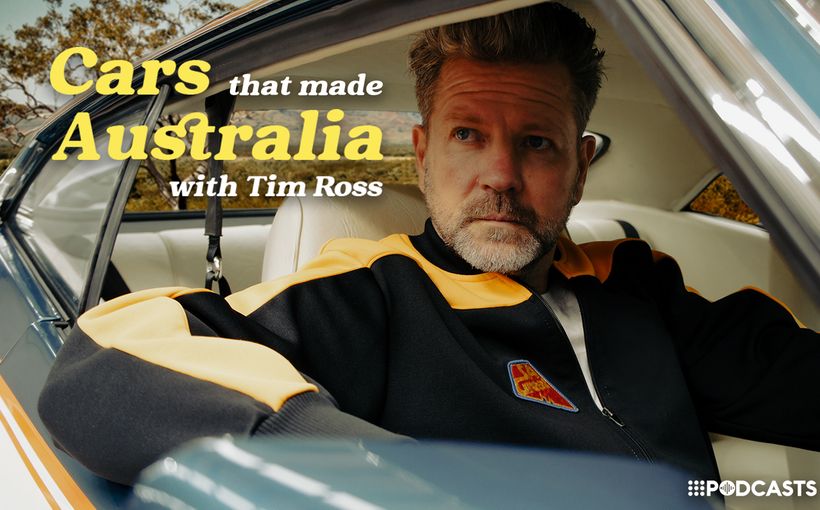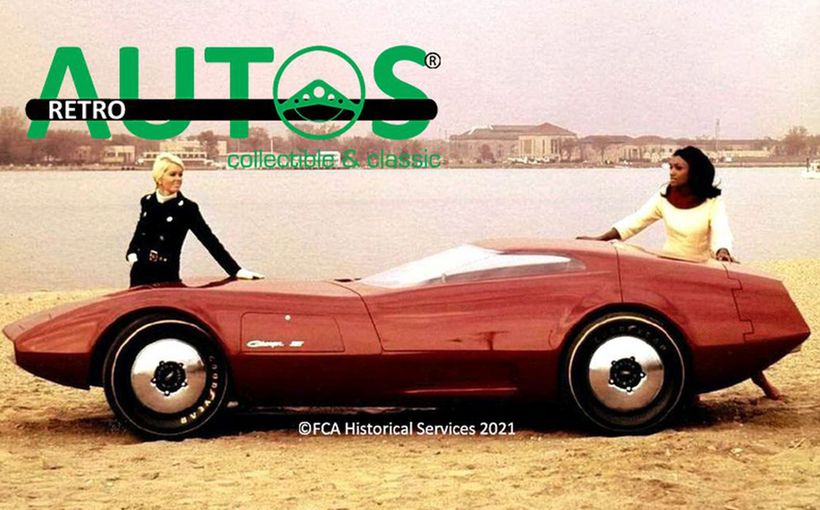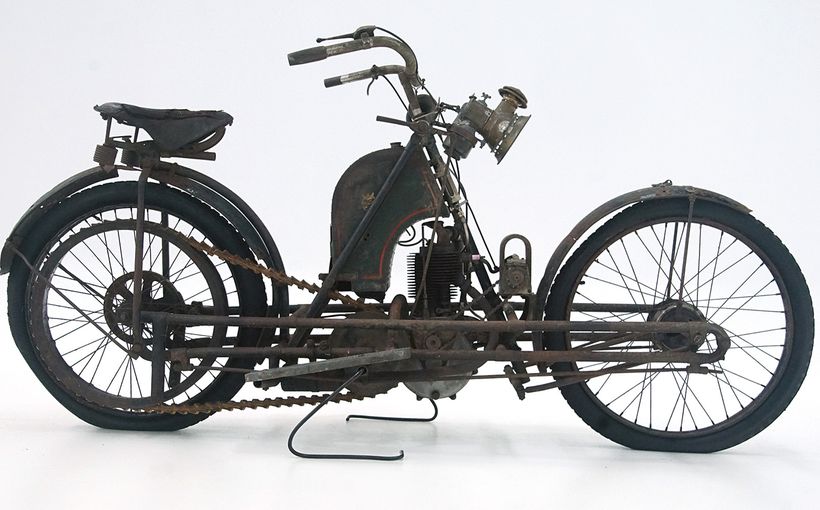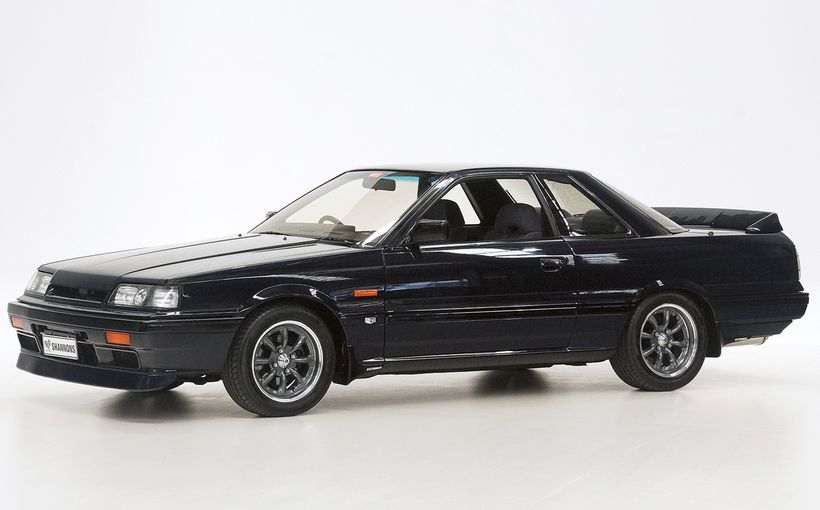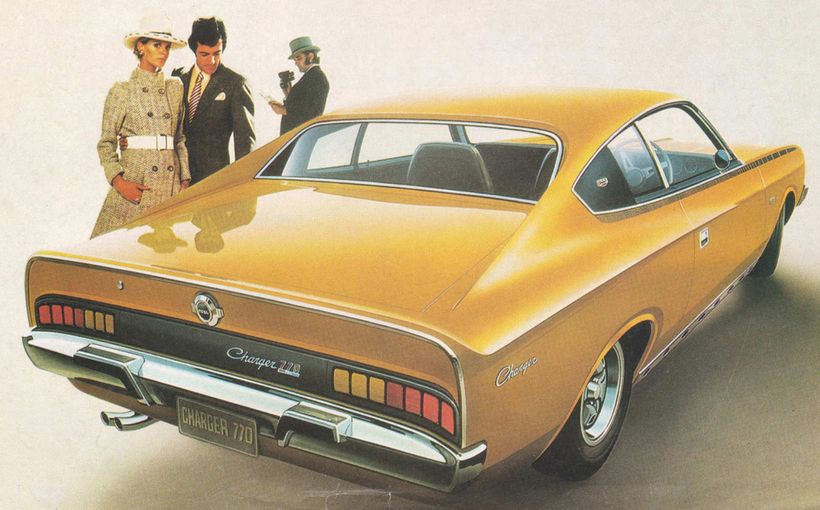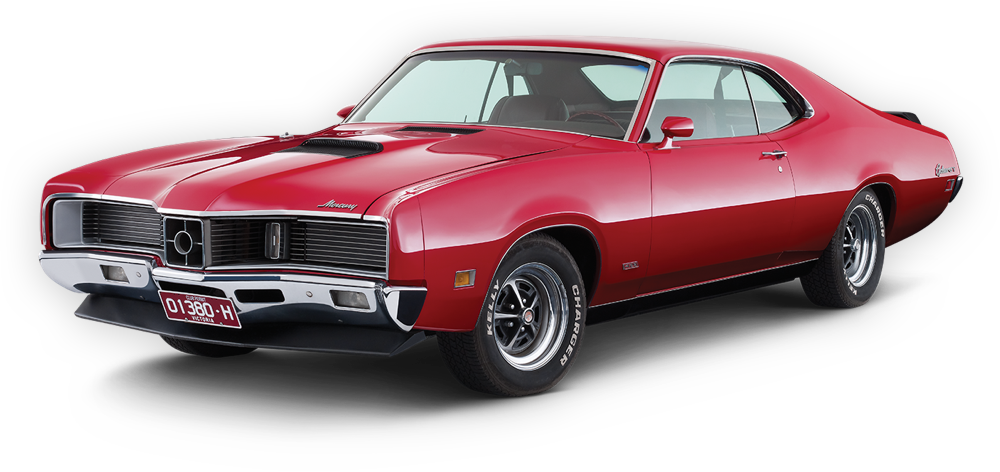Revealed: More Secret Charger Styling Ideas

The Valiant Charger is one of the most iconic Australian cars. It won the 1971 Wheels Car of the Year Award, beating Holden’s all-new HQ range.

For many years it was assumed that most of Chrysler Australia’s design studio’s drawings and photos, including those of the Charger, had been destroyed during the 1980s and 1990s. That assumption was not correct.
Thanks to a small group of staff, including designer Paul Blatch, who quietly rescued items that were destined for the waste bins, important aspects of Chrysler-Mitsubishi Australia’s heritage has been preserved. Many other artefacts were gifted to the National Motoring Museum (NMM) in Birdwood, SA, when Mitsubishi vacated its Adelaide manufacturing site.

Another important contributor to Chrysler-Mitsubishi’s heritage story is Dennis Nicolle. Dennis joined Chrysler in 1963 and from 1983 to 2002 was the company’s design chief. He is also one of the seven automotive designers featured in Shannons Design to Driveway series. There is a link at the end of the story.

As a result of Paul’s and Dennis’s efforts, and the co-operation of the NMM, I have been able to reveal many never-before-seen photos of the Valiant, Charger, Drifter and Magna/Verada styling proposals, as seen below, in previous editions of Retroautos®, and explain their relevance. (There are links to those stories at the end).




Now I can reveal even more photos of the Charger. Although some were taken at Chrysler’s American design studios, the majority were snapped with simple cameras at Chrysler’s Adelaide factory. Their quality varies because they were intended to be nothing more than visual reminders for later reference. No one ever thought they would be published over half a century later. I have enhanced a few images to improve their clarity. Colour has been added to some to highlight design ideas.
Charger: design to driveway

When work first stared on the VH range in 1968, an early proposal was a facelift of the VE/VF/VG body. The sketch above, of the two-door hardtop, shows a Charger badge of the front fender. A designer’s hint to replace the Pacer, perhaps?
Dennis Nicolle recalls that the Charger project started in November 1969 with a planned release for August 1971. The short development time was an example of the can-do attitude that characterised Australia’s car makers back then.
In the photo below, the design team is evaluating different bonnet scoop ideas and turn indicator light positions. Note how the right front fender has no indicator light. If you look closely, the grille is very different to the eventual VH grille.

VJ and VK ideas

Brian Smyth was Chrysler’s design boss until 1978. Here are four of his sketches of possible VJ and VK Chargers. The brown toned sketch, above, is dated 1971. The others were drawn in 1973. You may have seen these sketches elsewhere as small black and white images. What you see here are photos of the original water colour and ink drawings that were done on A3 sized paper. Chrysler Australia’s poor financial situation prevented these ideas from becoming a reality.



More VJ and VK ideas

With no money to fund major body shape changes, the design team experimented with bold stripes and decals. They also tried various inexpensive ways to re-shape the side rear window and false vent, as the photos above and below demonstrate.




Sportsman

To quickly and easily convey an idea, the designers had pads of standardised line drawings, to which they added stripes, decals, new lines and colours as needed. This technique was used when brainstorming ideas for the limited-edition Sportsman, which appeared with the VJ range. The colour scheme proposal, above, displays much less flamboyance than the red and white liveried production Sportsman.

Meanwhile, in Michigan


While the Australian design team was working on VJ and VK ideas, so too was a small group in the international design studio at Chrysler’s Highland Park, Michigan, headquarters. The teams constantly shared ideas, travelling back and forth across the Pacific. The photos above and below were taken in November and December 1973, and show different versions of a large louver replacing the small, fixed rear side window and false vent.


Back in Adelaide

Picking up where the Americans finished, the local design team mocked up a Charger with a thick centre pillar, large side louver, bold white stripes and a gold and silver badge, for release as a VK. They rolled it out into the design display area and took these images. But such major changes never made it beyond the design studio because they were too costly.
On the Grille


Not long after the VH was released in mid-1971, work began on the VJ and VK. One change the designers were keen to implement was a bolder and more impressive front-end appearance for the entire range. Many sketches were created as the teams in Australia and the USA searched for the most appealing appearance. But, there was one big barrier. As I have explained in previous stories about the VH-CM range, that barrier was the lack of funds to change the sheet metal on the VJ and VK models.
Above are two American sketches for the VK. Below is the final proposal photographed in Adelaide. It shows a very GM-style grille, and reflects a rejected front-end idea for the HQ Holden.


Rare Glimpse
The photos you see here, and those in previous editions of Retroautos®, are a rare glimpse into what might have been at Chrysler Australia. A special thanks to Paul Blatch for sharing his collection and Dennis Nicolle for his generosity and insights.
Although it is not on display, the National Motoring Museum at Birdwood in South Australia has an extensive collection of Chrysler-Mitsubishi Australia history. It includes scale clay models, blueprints, sketches and photos. That the collection is being preserved and collated by the museum highlights its importance to Australia’s automotive history. Thanks to Matthew Lombard, curator at the museum for access to the collection.


Retroautos® is written and published with passion and with pride by David Burrell. Retroautos® stories and images are copyrighted. Reproducing them in any format is prohibited. Retroautos® is a registered trademark. Reproducing it in any format is prohibited.
Valiants you never saw: part 2



